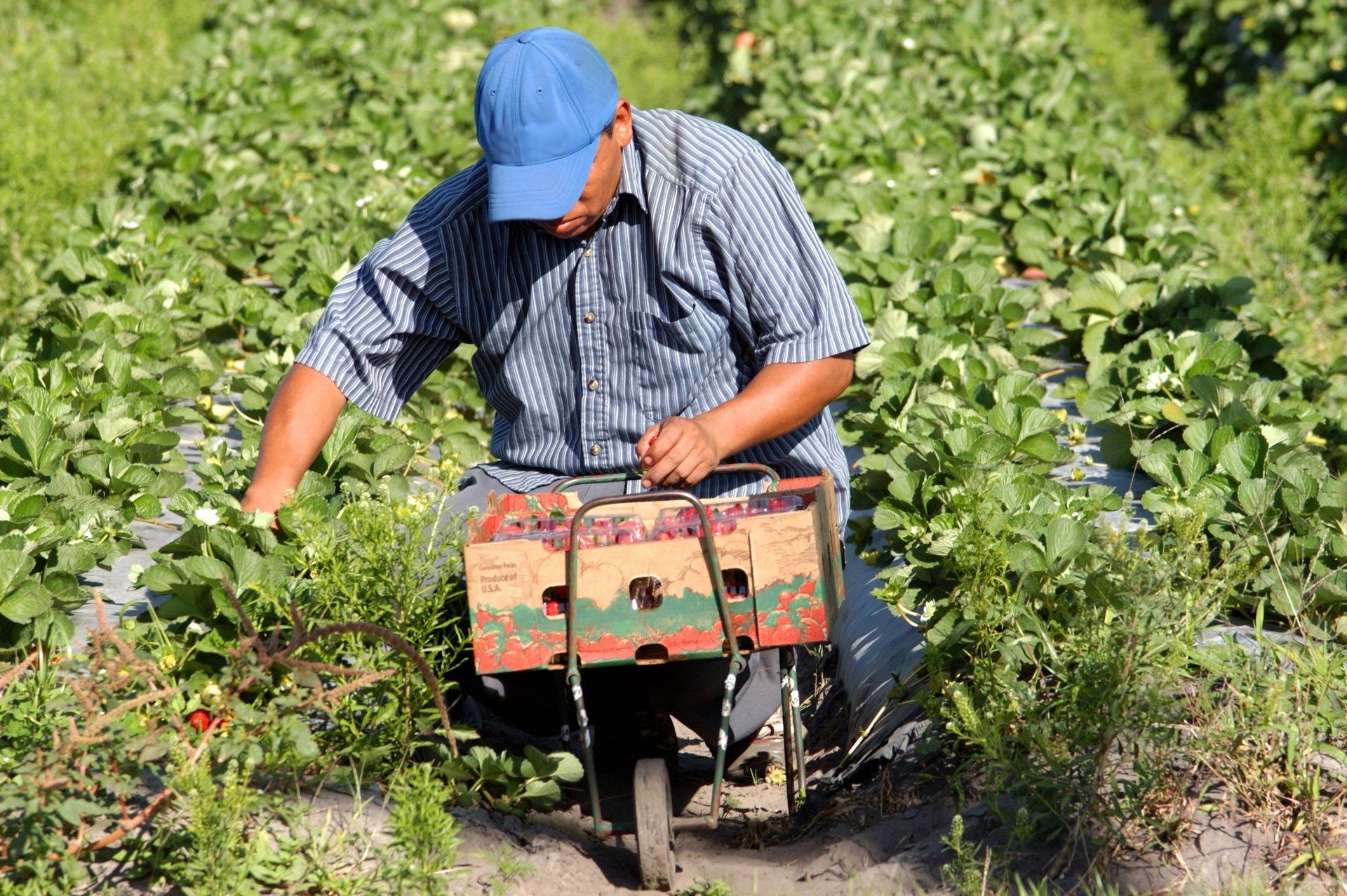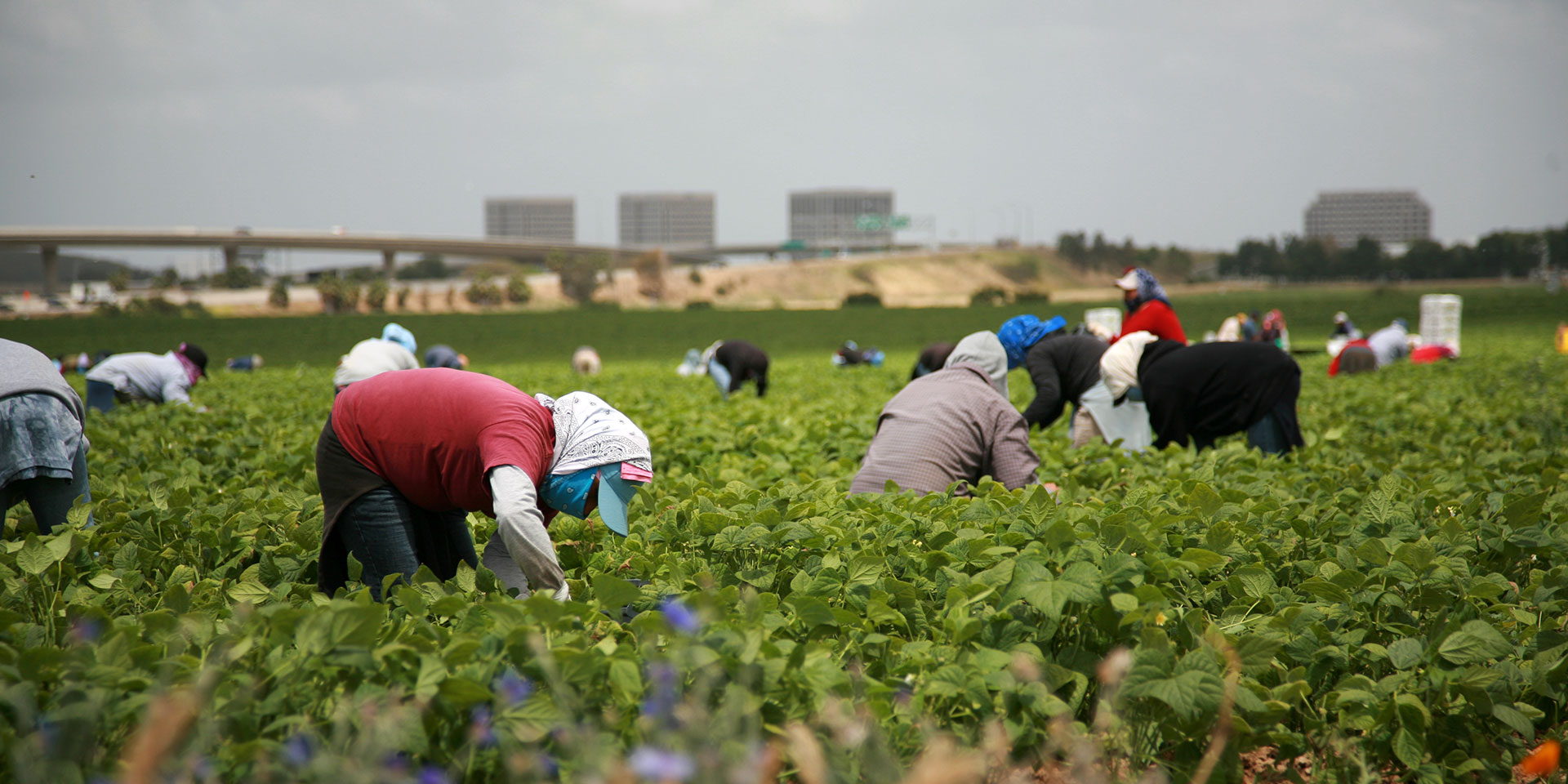Big Banana’s bitter labor truths
Any person even modestly familiar with the contours of our global food system has an inkling of the injustices it foists on the people it employs. Agricultural workers — whether they’re laboring in their home countries or as part of a migrant workforce in wealthier countries — are subjected to exploitation and abuse that remain stubbornly immune to lasting improvement. The litany of grievances includes, but certainly isn’t limited to, pesticide exposure and poisonings; poverty wages and wage theft; sometimes violent union-busting; physical abuse and sexual assault; forced and child labor. They apply almost as equally to palm, coffee, cocoa, pineapple, coconut and sugarcane plantations in tropical places, as to grape, lettuce, nut, berry and dairy fields and farms in temperate climates.
So, it’s with a certain amount of weariness that a reader might approach a new book about banana production in Ecuador, the world’s largest exporter of the world’s favorite fruit. Written by Ben Brisbois, a public health professor at the University of Montreal who’s been researching Ecuador’s banana workers since 2009, “Banana Capital” presents a history of the industry and the ways it’s grown and consolidated over the last century — quite literally on the backs of its laborers.
Most of Brisbois’s worker-related focus, though, is on the devastating health effects of exposure to pesticides like chlorpyrifos, which causes seizures, paralysis, lower IQ in children and death. Big banana companies like Dole, Chiquita and Del Monte have frequently sought to deflect blame for sickening their workers by implicating the workers themselves for not being diligent in their safety practices. In countries where the average banana worker makes less than $7,000 a year, it’s difficult to miss the cynicism behind this sort of tactic. Across all banana-producing countries and companies, “There isn’t enough PPE,” says Sandra Mendoza, Central American campaign lead for worker rights organization Global Labor Justice, referring to personal protective equipment like respirators, goggles and long-sleeved garments meant to shield workers from chemical harm.
Mendoza makes monthly visits to Costa Rica, which she calls “one of the hardest countries to organize,” in part because there are no places to sit down with workers: “You have to meet them outside when they come out on their breaks.” She says companies know full well “that they shouldn’t spray [pesticides] when workers are in the fields, or [they] should do it early in the morning before people are coming into the fields, or [they] have to look at which way the wind is blowing so that it doesn’t blow in the direction of the workers. But they continue to do it — that’s one of the more recurrent complaints that I hear.”
Brisbois sees companies’ refusal to provide adequate PPE, or even guarantee that crop dusters will avoid schools and homes and worker-filled fields, as part of a bigger corporate tendency toward what he calls the Plantationocene. This refers to the idea of the plantation as a monoculture model, where only a single crop, such as pineapples or sugarcane or bananas, are grown. But also, he says, in much the same way that parts in a factory are interchangeable, “The workers are interchangeable, and a banana from Honduras can be replaced on the shelf by a banana from Guatemala.” In other words, any sick or injured worker can easily be replaced by another worker; if there’s costly labor or environmental trouble in one country, fruit from another can easily be substituted. “A plantation is a technology for generating wealth based on controlling nature and other people,” Brisbois says.
In this sort of system, pesticide exposure is only one terrible problem among many. “I don’t even know if there’s an ethical banana company out there,” says Reid Maki, child labor advocacy director for the Child Labor Coalition. Ecuador, Belize, Nicaragua, Brazil (the world’s fourth largest banana producer), and the Philippines (the sixth largest producer and second largest exporter after Ecuador) all use child labor in their banana supply chains, according to the U.S. Department of Labor’s Bureau of International Labor Affairs (ILAB).
“I don’t even know if there’s an ethical banana company out there.”
(As of this writing, the Trump administration had taken away ILAB’s grant-funding mechanism that paid organizations to “teach people like banana workers about labor rights and how to organize, so the damage being done is massive,” according to Maki.) And even with a lot of loud and emphatic promises about reducing child agricultural labor over the last 20 years — especially in cocoa — “not much progress has been made despite all this attention,” Maki says.
Even seemingly less-terrible conditions for workers can have debilitating consequences. Wages in the banana industry have remained stagnant for years, keeping workers impoverished. This is happening even as employers increase demands on the people who work for them. As Mendoza explains it, the boxes bananas are packed in used to weigh 30 pounds — a reasonable load for a worker to heft. “A few years later, that went up to 35 [pounds], then 45, and now [companies] are asking for them to go up to 55 pounds.” In some cases, the price workers receive for packing those boxes remain the same, even though the time and exertion to accomplish the work has gone up. In others, the price may increase slightly “but I’m breaking my back — repetitive motion injuries are pretty high,” says Mendoza. “That’s what takes people to the doctor on a regular basis, and your life expectancy at work could be shorter, because your body is taking a lot more. People used to work till they were 60 or 55; now you have 35-year-olds with those injuries.”
Brisbois says women on banana plantations have a particularly challenging time: “They’ll often have to put up with sexual harassment…in exchange for not being given the worst jobs.” Other times, he says, they suffer in silence in order to protect family members who work on the same plantation. At home, he continues, they’re “often dealing with spouses or sons or even fathers who have themselves been [injured] and … the burden of extra care falls to” the women.
Public awareness of the food system’s inequities is how we got labeling schemes that assure us that our chocolate bar was produced without slave labor or deforestation, or that the animals we eat were raised humanely, or that a worker-owned cooperative was behind our morning cup of coffee. But Maki says these sorts of labels — Fairtrade and Rainforest Alliance, for example, are both meant to indicate social, economic and environmental standards — tend to deliver less than consumers would hope for, with abuses still rampant throughout supply chains. Herein lies a good amount of the exhaustion in considering, now, bananas. What consumer action could move that needle?
Probably not more of those labels we’ve come to rely on. Certifications are expensive, Brisbois says, which means only the big banana players can afford them. Fairtrade may protect some small farmers who have organized into cooperatives, but farmers with high ecological practices risk losing access to certification “if they don’t produce enough bananas, or enough that meet cosmetic quality standards,” says Brisbois. Additionally, in a move that alarmed labor and sustainability experts alike, third-party banana certifier Fairtrade International just announced a new CEO who’s worked for fossil fuel company BP and agrochemical company Bayer. This isn’t the sort of hire that encourages hope for positive change.
What might work, says Maki, is “if all of the banana workers in all of these countries were organized; they could do a banana strike and ask the companies to increase their wages above 50 percent. But there’s a lot of obstacles to organizing folks” in any one country, let alone all of them together. He doesn’t see much of a way around the challenges, other than for concerned consumers to write directly to banana companies and ask them to clean up their supply chains.
Adela Torries is coordinator of COLSIBA, which is the organizing body for all Latin America’s banana unions. She says her organization has had some successes in achieving collective bargaining agreements between workers and companies. But her advice to American consumers isn’t any more robust than Maki’s. As she wrote to FoodPrint (in Spanish), “Improve the payment for a box of bananas. That’s all you can do to improve working conditions.”
By subscribing to communications from FoodPrint, you are agreeing to receive emails from us. We promise not to email you too often or sell your information.
Top photo by MIA Studio/Adobe Stock.
More Reading
How are ultraprocessed foods defined? A new California bill aims to decide
July 25, 2025
The slow death of the family farm
July 15, 2025
A new book says tech-supported industrial ag will feed the world. Agroecologists would like a word.
July 9, 2025
Whey too much: The hidden costs of the protein boom
May 29, 2025
Beyond honeybees: The benefits of pollinator diversity
May 28, 2025
What do faster line speeds in slaughterhouses mean for animals, workers and food safety?
May 8, 2025
When "Made in America" isn't really: Country-of-origin labeling for beef
May 8, 2025
The never-ending seed oil debate
April 29, 2025
RFK Jr. pushes to close a food additive loophole – but is a gutted FDA up to the task?
April 14, 2025


